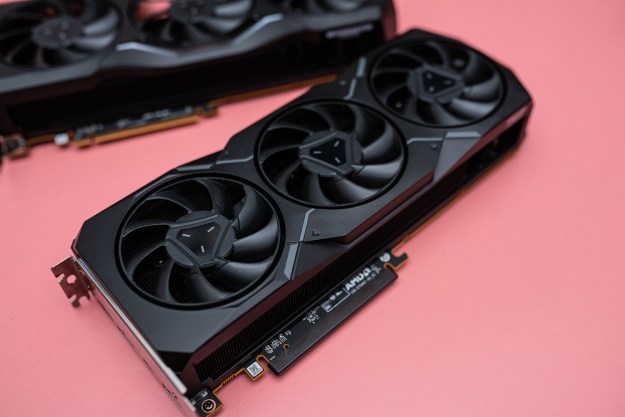AMD’s next-generation Radeon RX graphics, which will use the company’s upcoming RDNA 2 microarchitecture, could be ready to take on Nvidia’s best Ampere-based GeForce GPUs. Recently, it was leaked that AMD’s flagship desktop graphics, code-named Navi 21, could ship with 16GB of video RAM, while a second high-end model, code-named Navi 22, could sport 12GB of memory.
Memory specifications for the cards come by way of Twitter user @_rogame. AMD’s RDNA 2 microarchitecture is also known as Navi 2x or more colloquially as Big Navi, which promises a 50% performance uplift compared to the first generation RDNA architecture.
For comparison, Nvidia’s top-of-the-line GeForce RTX 3090 ships with 24GB of VRAM, while the RTX 3080 flagship ships with just 10GB of memory. Thanks to using the faster GDDR6X memory standard, which is exclusive to Nvidia, along with a 320-bit bus, the company was still able to get a bandwidth of 760 Gbps with the GeForce RTX 3080. Still, with 16GB of RAM, AMD’s card would come with 60% more memory than Nvidia’s flagship.
While AMD has dropped hints that its new line of graphics cards would fall under the “6000 series” branding, it’s recently believed that the high-end card with 16GB of VRAM would be called the Radeon RX 6900 XT. The exact naming, however, isn’t confirmed.
AMD has an event scheduled on October 28 to unveil its new RDNA 2 architecture, so we shouldn’t have much longer to wait.

More recently, the company revealed a render of its GPU, showing off a metal-housed card with a triple-fan design. Unlike Nvidia, which has removed its Team Green RGB lights in favor of a mature sophisticated white backlighting, AMD may be sticking with a gaming-forward design with red accents, sharp angles, and a stylized “R” on the fan to represent its Radeon branding.
And while Nvidia had switched to a low-profile 12-pin connector to save space, it appears that the new Radeon cards may use dual eight-pin connectors for power.
Game Debate also posted a second leaked image of AMD’s forthcoming 6000 series card, revealing a slightly smaller footprint and a dual-fan design. This smaller card could represent the 12GB model, suggesting that the larger card could be positioned to take on Nvidia’s GeForce RTX 3090 with its triple-slot design. The smaller card could get branded as the Radeon RX 6700 XT when launched.

When compared to Nvidia’s flagship GeForce RTX 3080, AMD’s memory advantage may not last for long, however. It’s rumored that Nvidia may be working on a future version of the GeForce RTX 3080 with up to 20GB of video memory.
In the top-tier space, Nvidia could further extend its advantage over AMD with a new high-end Titan RTX card based on the latest Ampere architecture. That card could launch in 2021 with a whopping 48GB of memory, according to YouTube channel Moore’s Law is Dead and reported by Tom’s Guide. However, this card will likely be targeted at professionals and creatives, rather than gamers and could cost a fair amount more than the $1,4999 RTX 3090.
Editors' Recommendations
- I tested AMD’s RX 7800 XT against Nvidia’s RTX 4070, and there’s a clear winner
- RTX 4060 Ti 16GB launches July 18 amid desperate price cuts
- Nvidia GeForce RTX 4070 vs. AMD Radeon RX 6950 XT: a close call
- Nvidia RTX 4070 Ti vs. AMD RX 7900 XT: Two odd choices for your next GPU
- AMD RX 7900 XTX vs. Nvidia RTX 4090: the ultimate flagship GPU battle



